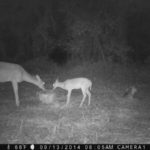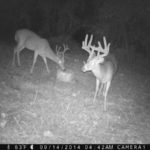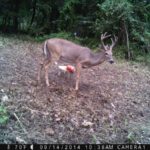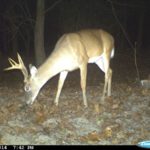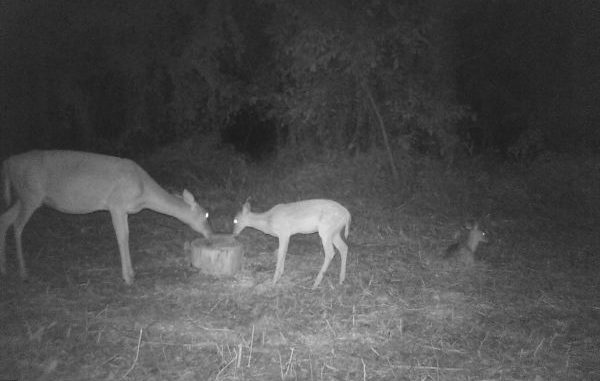
The next four photographs are from a tract of land along the Mississippi River in East Baton Rouge Parish. The habitat is bottomland hardwoods, but the oak component is lacking.
The dominant trees are cottonwood, sycamore and box elder. There are some pecans and persimmons, and deer were hitting the persimmons hard in October.
There is no agriculture on this tract of land but native browse availability and nutritional value are high due to the rich river bottom soil.
Browse utilization is high, and the hunters feed deer during the season. Growth and development trends are unknown, and the deer population is high based on camera surveys and browsing of native vegetation.
It would be nice to know the growth trends of this herd in order to develop better buck harvest strategies, but basically the hunters try to harvest mature adult bucks, along with some antlerless harvest.
No. 1
Because this is Area 6, the rut is late — in January and February —which means fawning occurs in August and September.
Would you shoot this adult doe? Probably not, since she has two spotted fawns with her.
But what if the doe came out by itself? Most bowhunters would probably release an arrow.
This is the reason the antlerless harvest is delayed during the bow season in Area 6. I suggest to most clubs and landowners in Area 6 that hunters wait until November before harvesting does, unless absolutely positive a deer did not fawn.
On Oct. 1 in Area 6, most fawns are only 1 to 2 months old and need to nurse for at least another month or so.
Let her go and let her finish raising her two fawns.
No. 2
This velvet 10-pointer is a no-brainer, if you get to see it during daylight hours.
No doubt it is a mature buck — 4 to 6 years old — and has heavy mass, but the inside spread is not great. A good hardwood component and/or agriculture would certainly help this herd achieve maximum growth and antler development, but it is still a great deer.
No. 3
Another velvet buck, although not as large as the previous one. It’s one that you probably should let go so it can grow.
It is an adult buck, but without knowing the growth trends of this herd it is hard to say if it is a 2- or 3-year-old.
No. 4
The side view clearly shows the buck has short main beams, even though it has 8 points. It is an adult buck and might be just a 2-year-old, but without data to point out the growth trends it is hard to say.
This is a club for which I would suggest shooting a few bucks from all the age classes to document body growth and antler development.
